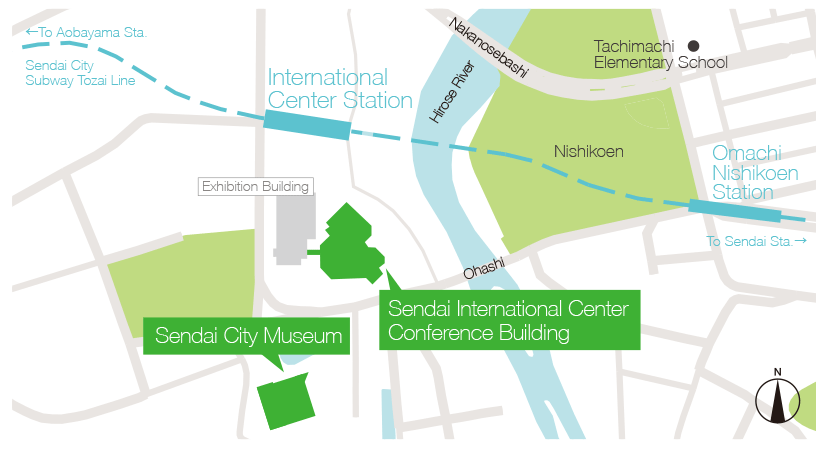1st Anniversary of WCDRR: For Contributing to the Future
of Disaster Risk Reduction from Sendai and Tohoku
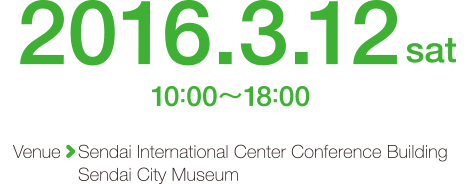
Organizer: City of Sendai Joint Organizer: The United Nations Office for Disaster Risk Reduction (UNISDR) Office in Japan
Supported by : The Cabinet Office / Reconstruction Agency / Ministry of Foreign Affairs of Japan / Iwate Prefecture / Miyagi Prefecture /
Fukushima Prefecture / International Recovery Platform (IRP)
OBJECTIVE
The City of Sendai organizes this Symposium to commemorate one year since the Third UN World Conference on Disaster Risk Reduction (WCDRR) was held in Sendai. We plan to gather local citizens, municipal government officers, research institution members and others who have engaged in the reconstruction and disaster risk reduction efforts in the Sendai and Tohoku area. The purpose of this Symposium is to think and share ideas about what we can do to accelerate disaster risk reduction in the future in Sendai and Tohoku; we hope to accomplish this through a set of presentations on different topics, discussing and sharing the direction and challenges on their future activities in accordance with the Sendai Framework for Disaster Risk Reduction 2015-2030. The Sendai Framework is the international guideline for disaster risk reduction that was adopted at the Third UN World Conference on Disaster Risk Reduction in Sendai.
SCHEDULE

PROGRAM
Opening 10:00-10:45 Venue: Sendai International Center Conference Building Main Hall
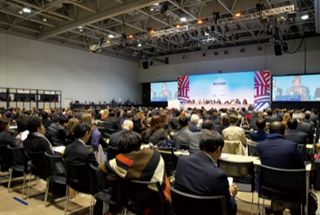
※Image
Seating capacity 1,000 No application necessary Simultaneous interpretation
PROGRAM
■Organizer’s Opening Remarks
●Ms. Emiko Okuyama
Mayor, City of Sendai
■Guest’s Opening Remarks
●Mr. Kaoru Saito
Director, International Cooperation Division Disaster Management Bureau, the Cabinet
Office, Government of Japan
■Keynote Presentation
“Sendai Framework for Disaster Risk Reduction 2015-2030 and Expectations to Local Actors” (Provisional Title)
【Speaker】
●Mr. Robert Glasser
Special Representative of the Secretary-General for Disaster Risk Reduction Head of the United Nations Office for Disaster Risk Reduction
(UNISDR)
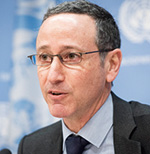
■Mr. Robert Glasser (Born in 1959, Australia)
He holds a PhD in International Relations from the Australian National University. Up until 2008 he served a number of posts including Assistant Director General at the Australian Agency for International Development and Chief Executive of CARE Australia. From 2008 to 2015, he was the Secretary General of CARE International, one of the world’s largest non-governmental humanitarian organizations, active in over 80 countries. He took up his present position in January 2016.
Thematic Sessions Venues: Sendai International Center Conference Building / Sendai City Museum
- A1
-
Seating capacity 90 No application necessary
People-centred Roadmap for Reconstruction 11:00 ー 13:00 Venue: Meeting Room 1 (1F)
Organizer: General Incorporated Association Miyagi Cooperative Reconstruction Center
Contact: info@renpuku.orgOBJECTIVE
This session will introduce the “Project for Creating the People-centred Roadmap for Reconstruction”, which is being led by Iwate, Miyagi and Fukushima Cooperative Reconstruction Centers.
PROGRAM
■Opening: About This Project
●Mr. Junichi Kano (Chairperson, Iwate Cooperative Reconstruction Center)■Presentation People-centered Roadmap to Reconstruction Report
●Mr. Tetsuya Obuki (Deputy Director-General, Iwate Cooperative Reconstruction Center)■Panel Discussion
【Panelist】
●Mr. Tetsuya Obuki (Deputy Director-General, Iwate Cooperative Reconstruction Center)
●Mr. Junichi Kano (Chairperson, Iwate Cooperative Reconstruction Center)
●Mr. Ryuichi Nozaki (President, KOBE Community Research Institute)
●Mr. Nobuyoshi Yamazaki (Board Member and Secretary General, Fukushima Cooperative Reconstruction Center)
【Coordinator】
●Mr. Naoki Ishizuka (Division Manager, Miyagi Cooperative Reconstruction Center)
- A2
-
Seating capacity 90 Priority given to advance applicants
~Machinowa~ Citizen-centred Framework for DRR 11:00 ー 15:30 Venue: Meeting Room 2 (1F)
Organizer: Sendai-Miyagi NPO Center
Contact: minmin@minmin.orgOBJECTIVE
At this session, we will deepen our understanding of the “Sendai Framework for Disaster Risk Reduction 2015-2030”, which was adopted at the Third UN World Conference on Disaster Risk Reduction, and explore how we can best employ this framework as a “Citizen-centred Framework for DRR” in order to promote sustainable urban and regional development. We will also consider the role of intermediary support organizations and the system we have that facilitates and promotes cooperation beyond various sectors through case studies and dialogues among regional organizations and NPOs on disaster prevention and risk reduction.
PROGRAM
■Opening
■Panel Discussion:Five years after the earthquake -the change and future of activities
【Panelist】
●Ms. Etsuko Takahashi (6・7 Comi-Net Salon Section, Boken-Asobiba Sendai・Miyagi Network)
●Ms. Sayaka Sugawara (Community 4 Children)
●Mr. Wataru Ogura (CIL-tasuketto)
●Mr. Satoshi Oikawa (Disaster Area Disabilities Center Miyagi)
●Mr. Tomohiro ITO (Miyagi International Association)【Coordinator】
● Mr. Tsuyoshi Ikeza (Japan Civil Network for Disaster Relief in the East Japan)■Workshop & Panel Discussion:For the Future ~the role of support groups~
【Panelist】
●Ms. Masami Sonoda (University-Network of Disaster Volunteer Station)
●Mr. Satoshi Hayakawa (Sendai City Council of Social Welfare)
●Mr. Tatsuo Kikuchi (Sendai City Support Center for Civil Activities)
●Mr. Masanobu Kanegasaki (Junior Chamber International Sendai)【Coordinator】
●Mr. Tsuyoshi Ikeza (Japan Civil Network for Disaster Relief in the East Japan)
- A3
-
Seating capacity 400 No application necessary Simultaneous interpretation
Live talk: Towards the Implementation of the Sendai Framework for Disaster Risk Reduction – a dialogue on wide-area reconstructions through experiences from the Great East Japan Earthquake and disasters overseas 13:50 ー 15:50 Venue: Main Hall (1F, 2F)
Organizer: General Incorporated Association Miyagi Cooperative Reconstruction Center
Contact: info@renpuku.orgOBJECTIVE
This session will present the activities of various organizations that were started during the reconstruction process of the Tohoku region to facilitate wide-area restoration and will also raise problems that were faced. These organizations include: citizen-based Cooperative Reconstruction Centers established in the three disaster-affected prefectures of Iwate, Miyagi and Fukushima. It also includes Japan Voluntary Organizations Active in Disaster (JVOAD), which is working to create a network for disaster relief in Japan through its preparatory committee and Japan CSO Coalition for Disaster Risk Reduction (JCC-DRR) which will introduce their activities which advocate for disaster prevention and risk reduction in Japan.
PROGRAM
■Opening
●Ms. Akiko Benimura (Chairperson, Miyagi Cooperative Reconstruction Center)■Panel Discussion
(1)About People-centered Roadmap to Reconstruction Project Initiative
(Iwate, Miyagi and Fukushima Cooperative Reconstruction Centers)
(2)Creating a Smoother Nationwide Disaster Response Network that Supports Victims of National Disasters
(3)Advocacy Activities about Disaster Response from International Viewpoints to Better Create a “Disaster Resilient Society”【Panelist】
(1)Mr. Junichi Kano(Chairperson, Iwate Cooperative Reconstruction Center)
(2)Mr. Tetsuya Myojo (Chief of Secretariat, Japan Voluntary Organizations Active in Disaster (JVOAD) Preparation Office)
(3)Mr. Takeshi Komino (Secretariat, Japan CSO Coalition for Disaster Risk Reduction / Secretary General, Church World Service
Japan Board Member)【Coordinator】
●Ms. Akiko Benimura (Chairperson, Miyagi Cooperative Reconstruction Center)
- B
-
Seating capacity 250 Priority given to advance applicants
The Current Status of Reconstruction and the Future Challenges of the Great East Japan Earthquake 11:00 ー 13:00 Venue: Tachibana Conference Hall (2F)
Organizer: City of Sendai
Contact: som000300@city.sendai.jpOBJECTIVE
It has been 5 years since the Great East Japan Earthquake, which caused unprecedented damage. At this turning point, various leaders of the reconstruction effort which includes not only government officials, but also disaster-affected persons, supporters, and support staff from other cities, will meet together to share the results and activities of this 5-year period. They will discuss, from multiple viewpoints, their respective roles to be played, issues to be addressed, and the ways to better join together in efforts towards future reconstruction. We would like to invite any citizens interested in this theme to participate, as well as those already involved in the reconstruction process.
PROGRAM
■Part 1:Rebuilding Lives
Support for Disaster Victims and Sendai City’s Reconstruction Renaissance
【Presenter】
●Fumio Nishizaki (Assistant Director, Life Rebuilding Promotion Office, Post-Disaster Reconstruction Bureau, City of Sendai)■Part 2:Panel Discussion
Reconstruction Renaissance from Here On Out ~Rebuilding Lives with Present and Future Initiatives~
【Panelist】
●Mr. Shuichi Sato (Chairman, Sendai Port Hinterland No.6 Park Temporary Housing Autonomy and Representative of the Preparation Committee for the Foundation of Tago-nishi 3-chome Neighborhood Association)
●Mr. Ruriko Oba (Vice Chairman, Wakabayashi-nishi Seseragi Neighborhood Association)
●Mr. Takenori Ujiie (Section Leader, Good Neighbor Project Division, Personal Support Center)
●Mr. Shin-ichiro Yamashita (Senior Officer, General Affairs Section, General Affairs Department, City of Uwajima)【Coordinator】
●Ms. Kishie Shigekawa (Professor, Tokoha University Graduate School of Disaster Research)
【Commentator】
●Fumio Nishizaki(Assistant Director, Life Rebuilding Promotion Office, Post-Disaster Reconstruction Bureau, City of Sendai)
- C
-
Seating capacity 250 Priority given to advance applicants
The Great East Japan Earthquake: The direction of the reconstruction process and the domestic and international dissemination of the progress 13:50 ー 15:50 Venue: Tachibana Conference Hall (2F)
Organizer: IRIDeS, Tohoku University / City of Sendai
Contact: mac001605@city.sendai.jpOBJECTIVE
This panel discussion will be held on trends and problems in future reconstruction from the Great East Japan Earthquake. Firstly, the panel will talk about information based on reports concerning the current state of reconstruction from the disaster in Iwate, Miyagi and Fukushima Prefectures. While remaining aware of “Build Back Better”, an important concept from the Sendai Framework for Disaster Risk Reduction 2015-2030, it will also focus on domestic and international information sharing about current trends and problems. The discussion will additionally reflect the domestic and international disaster reconstruction knowledge from the International Recovery Platform (IRP), disaster management education at Tohoku University and other experiences of improving regional disaster prevention.
PROGRAM
■Opening
●Mr. Hiroaki Maruya (Professor, International Research Institute of Disaster Science(IRIDeS), and School of Public, Tohoku University)■Organizer’s Remarks
●Atsushi Kikuta (Senior Director, Disaster-Resilient and Environmentally-Progressive City Promotion Office, City of Sendai)■Reporting
(1)Evaluation of the Progress of Reconstruction and Issues to be Resolved
●Mr. Katsuya Hirano (Associate Professor, International Research Institute of Disaster Science (IRIDeS), Tohoku University)
(2)Presentations on the Progress of Reconstruction by Representatives of Iwate, Miyagi and Fukushima Prefectures■Panel Discussion
(1)Presentation by the International Recovery Platform
(2)Presentation by the International Research Institute for Disaster Science, Tohoku University
(3)Presentation by the Cabinet Office
(4)Plenary Discussion【Panelists】
●Mr. Kaoru Saito (Director, International Cooperation Division Disaster Management Bureau, the Cabinet Office, Government of
Japan)
●Mr. Shingo Kouchi (Senior Recovery Expert, International Recovery Platform (IRP))
●Mr. Takeshi SATO (Professor, International Research Institute of Disaster Science (IRIDeS), Tohoku University)
●Mr. Katsuya Hirano (Associate Professor, International Research Institute of Disaster Science (IRIDeS), Tohoku University)【Coordinator】
●Mr. Hiroaki Maruya (Professor, International Research Institute of Disaster Science(IRIDeS), and School of Public, Tohoku
University)
- D
-
Seating capacity 150 Priority given to advance applicants
Talk×Talk Women in Leadership 2016 11:00 ー 12:30 Venue: Sakura Hall 2 (2F)
Organizer: City of Sendai / Gender Equal Opportunity Foundation
Contact: http://www.sendai-l.jpOBJECTIVE
The public forums under the theme of “Gender and Disaster Risk Reduction” at the Third UN World Conference on Disaster Risk Reduction focused on the contribution of women to disaster prevention and post-disaster reconstruction and shared with visitors the recognition of the importance of women’s leadership under normal circumstances and during times of disaster in local communities. This session will deepen the discussion on “promoting leadership by women”, which was identified as an essential element to reduce disaster risk in the Sendai Framework for Disaster Risk Reduction, and various forms of leadership, as well as the results and possibilities created by lateral cooperation among female leaders in the disaster-affected area, by shedding light on their activities and achievements in Sendai, Miyagi, and Fukushima.
PROGRAM
【Facilitator】
●Mr. Susumu Sakakibara (NGO Urban Design Works CEO)
【Speaker】
●Ms. Noriko ABE (Owner, Minami Sanriku Hotel Kanyo)
●Ms. Tomomi Hayashizaki (Girls Life Labo)
●Ms. Emiko Munakata (Representative Director, NGO Equalnet Sendai)
●Ms. Aya Wakou (Chairman of Leaders, Woman Disaster Prevention Network)
- E
-
Seating capacity 160 No application necessary
Possibilities of Future Coordination for DRR Communication
– How should we continue and strengthen our efforts? 13:50 ー 15:50 Venue: Sakura Hall 2 (2F)
Organizer: Miyagi Round-table Conference on Disaster Risk Reduction
Contact: entaku@po.kahoku.co.jpOBJECTIVE
The Miyagi Round-table Conference on Disaster Risk Reduction, a voluntary organization established in April 2015 in the wake of the UN WCDRR to continue and strengthen dissemination of disaster risk reduction information, will summarize its activities for the 1-year period and discuss their future direction and coordination. At this session, the discussion will take place on the themes necessary for the unified sharing of lessons learned from the earthquake and public education for disaster risk reduction from disaster-affected areas, as well as the way to build the platforms necessary for these goals.
PROGRAM
This is the first round-table conference open to the public in which there is no specific agenda for discussion. You will witness a free and vigorous exchange of opinions among panelists.
- F
-
Seating capacity 200 Priority given to advance applicants Simultaneous interpretation
“Build Back Better”: Towards Resilient World from the Experience of the Great East Japan Earthquake 11:00 ー 12:40 Venue: Shirakashi Conference Room 1 (3F)
Organizer: Japan International Cooperation Agency(JICA)
Contact: thictpp@jica.go.jpOBJECTIVE
JICA is working on disaster reconstruction support projects in the Philippines (hit by Cyclone Yolanda/Haiyan on November 8th, 2013) and Nepal (hit by the major earthquake on April 25th, 2015), that reflect the knowledge gleaned from the Great East Japan Earthquake among other major disasters in Japan under the “Build Back Better” strategy. This session will explore those projects and the lessons learned in addition to improved DRR and reconstruction efforts from the Great East Japan Earthquake that can be shared with the world. This panel discussion will feature JICA technical trainees.
PROGRAM
■Opening Address
●Mr. Tatsuya Murase (Director General, JICA Tohoku Branch Office)■Lecture:Disaster Experience in Japan: JICA's Cooperation on Disaster Risk Reduction Based on SFDRR
●Mr. Satoru Mimura (Deputy Director General, and Group Director for Disaster Risk Reduction Group, Global Environment
Department, JICA Headquarters, and Senior Researcher, JICA Research Institute)■Case Study
(1)Outline of Cyclone Yolanda and JICA’s Support for Reconstruction
●Mr. Atsutoshi Hirabayashi (Senior Adviser, JICA Headquarters)
(2)Progress of Reconstruction from Cyclone Yolanda
●Mr. Ildebrando BERNADAS (Assistant Administrator, CDRRMO, Tacloban City)
●Ms. Janis CANTA (City Planning and Development Officer, Tacloban City)
(3)International Reconstruction Support Provided by Higashi-Matsushima City
●Mr. Shuya Takahashi (Director, Revival Planning Division, City of Higashimatsushima)
(4)Outline of the Nepal Earthquake and JICA’s Support for Reconstruction
●Mr. Akira Nakamura (Director General, Infrastructure and Peacebuilding Department, JICA Headquarters)■Questions and Answers
■Closing Speech
●Yukimoto Ito (Vice Mayor, City of Sendai)
- G
-
Seating capacity 50 No application necessary
Student Report on their Learning and Experiences through their Activities for Earthquake Reconstruction 11:00 ー 12:30 Venue: Shirakashi Conference Room 2 (3F)
Organizer: Fukkou University Alliance
Contact: info@fukkou-daigaku.jpOBJECTIVE
“Fukkou University Alliance”, is a project supported by a subsidy from the Ministry of Education, Culture, Sports, Science and Technology, and was undertaken by member universities and junior colleges of the Academic Consortium of Sendai who gathered after the Great East Japan Earthquake. It focuses on the following four key areas: (1) Training & Education for Future Reconstruction Leaders, (2) Education Restoration Support, (3) One-Stop Support Service for Community Restoration, and (4) Disaster Volunteer Station. “Fukkou University Alliance” started in FY2011 as a 5-year project and has had many students participate and aims to contribute to post-disaster reconstruction and disaster risk reduction by developing human resources, improving the educational environment, training student volunteers, and facilitating industry and community revival in the disaster affected area. In this session, presentations will be made on what the students learned and what roles they played while engaged in this project.
PROGRAM
■Presentations by Students Who Participated in the Fukkou University Alliance Project
Students who studied in the Fukkou University Alliance will make presentations on how they have participated in and contributed to community-based disaster preparedness and reconstruction efforts.
●Ms. Izumi Oikawa (Human Resource Development Course, Tokyo University of the Arts)
●Mr. Sota Sasaki / Ms. Haruka Nishimura / Mr. Toru Tezuka (Volunteer Station, Tohoku Gakuin University)■Disaster Risk Reduction Game
This is a card game developed by students who participated in the Fukkou University Alliance project to foster the ability to make appropriate on-the-spot decisions when a disaster strikes.
●Ms. Hitomi Anzai (Human Resource Development Course, Tohoku University)
- H
-
Seating capacity 70 No application necessary
Towards Information Communication Network in Resilient Society 13:00 ー 15:30 Venue: Shirakashi Conference Room 2 (3F)
Organizer: Research Organization of Electrical Communication, Tohoku University
Contact: roec-web@riec.tohoku.ac.jpOBJECTIVE
Many serious issues came to light in the Great East Japan Earthquake, such as the disruption of communications network. To solve these issues, Research Organization of Electrical Communication, Tohoku University was established on October 1, 2011 which plays a central role in linking researchers in electrical engineering and information sciences across multiple faculties. Research and development projects that were supported through industry-academic-government collaboration about disaster-resilient information communication systems and their social implementation will be introduced. The overall goal is a “resilient society”, that will enhance the capacity to withstand and recover from natural disasters.
PROGRAM
■Lecture
(1)A Disaster-resilient Society Supported by Information and Communications Technology
●Mr. Naoki Okano (Director-General, Tohoku Bureau of Telecommunications, MIC)
(2)Research Organization of Electrical Communication’s Research Activities
●Prof. Nei Kato (Executive Director, Research Organization of Electrical Communication, Tohoku University)
(3)Sharing and Organizing Disaster Prevention Information by Using Natural Language Processing
●Prof. Kentaro Inui (Graduate School of Information Science, Tohoku University)
(4)Disaster-resilient Next Generation Very-Small-Aperture Terminal (VSAT)
●Prof. Noriharu Suematsu (Research Institute of Electrical Communication, Tohoku University)
(5)Research and Development of Disaster-Resilient Information and Communications Technology
●Dr. Hiroshi Kumagai (Associate Director General, Resilient ICT Research Center, NICT)【Moderator】
●Mr. Yasushi Sakanaka (Vice Executive Director, Research Organization of Electrical Communication, Tohoku University)
- I
-
Seating capacity 200 No application necessary
Forum on Community Disaster Management Planning 11:00 ー 15:50 Venue: Sendai City Museum Auditorium (1F)
Organizer: The Cabinet Office, Government of Japan
Contact: TEL. 03-3502-6984 FAX. 03-3581-7510OBJECTIVE
In order to mitigate damage caused by a disaster, initiatives based on public help, self-help and mutual help are critical. In Japan there are many cases where DRR activities are actively implemented at a community level. One example of this is communities which are currently implementing grass-roots level DRR activities in accordance with the Community Disaster Management Plan System that started in 2014. This forum provides the opportunity to raise public awareness of local DRR activities and the opportunity to consider the DRR activities implemented in their own areas and communities and to take an interest in DRR activities in other areas where such activities have not yet been implemented by introducing various activities held currently at the local level.
PROGRAM
■Opening Speech
●Mr. Kaoru Saito (Director, International Cooperation Division Disaster Management Bureau, the Cabinet Office, Government of
Japan)■Panel Discussion 1: “How Should We Deal With Tsunamis?”
【Moderator】
●Ms. Aiko Sakurai (Associate Professor, International Research Institute of Disaster Science, Tohoku University)
【Panelist】
●Kamikama District (City of Ishinomaki, Miyagi Prefecture)
●Yoshizaki District (City of Awara, Fukui Prefecture)
●Otsuka Pharmaceutical Factory, Inc. and Kawahigashi District Individual Disaster Prevention, Satouracho Individual Disaster
Prevention (City of Naruto, Tokushima Prefecture)
●Shimoji District (City of Kochi, Kochi Prefecture)
●Cyoko District (City of Hyuga, Miyazaki Prefecture)■Panel Discussion 2: “How Should We Deal with Disasters in an Aging Society?”
【Moderator】
●Ms. Mayumi Sakamoto (Associate Professor, Designated Associate Professor Disaster Mitigation Reserch Center, Nagoya University)
【Panelist】
●Syuzenji New Town (City of Izu, Shizuoka Prefecture)
●Hoshizaki School District (City of Nagoya, Aichi Prefecture)
●Niunomata District (City of Tsu, Mie Prefecture)
●Nakayama Satsukidai Junior High School District (City of Takarazuka, Hyogo Prefecture)
●Gonyo District (City of Matsuyama, Ehime Prefecture)■Break Time (12:50 ー 13:50)
■Panel Discussion 3: “How should We Encourage Disaster Prevention knowleade in Local Companies and Citizens?”
【Moderator】
●Mr. Masahiro Sawada (Associate Professor, Nagaoka Institute of Design / Vice Director, Center for Co-Creatiom with Regional
Society Department of Architectuer and Environmental Design)
【Panelist】
●Tokiasu Management Union (Arakawa-ku, Tokyo Metropolitan Area)
●Takagicho Neighborhood Association (City of Kokubunji, Tokyo Metropolitan Area)
●Higasikanda 3 tyo-me District (City of Nagaoka, Niigata Prefecture)
●Yahagi-kita School District (City of Okazaki, Aichi Prefecture)
●Kinei School District (City of Niihama, Ehime Prefecture)■Panel Discussion 4: “What Disaster Prevention Methods Should We Recommend for Local Communities?”
【Moderator】
●Mr. Hajime Kagiya (Professor, Faculty of Tourism and Community Studies, Atomi University)
【Panelist】
●SYM Three Town Accident Joint Association (Sinhana, Mikumi Yayoi and Mikumi of Bunkyo-ku, Tokyo Metropolitan Area)
●Honda Union Neighborhood Association (City of Kokubunzi, Tokyo Metropolitan Area)
●Kamiyama Coalition District (City of Ichinomiya, Aichi Prefecture)
●Shinyo Elementary School District (City of Kobe, Hyogo Prefecture)
●Takahama District (City of Matsuyama, Ehime Prefecture)■Summary
●Mr. Jun Oyane (Professor, Senshu University, School of Human Sciences)
●Mr. Yasuo Kawawaki (Secretary-general, International Center for Environmental Management of Enclosed Coastal Seas)
●Ms. Hitomi Murakami (Associate Professor, Graduate School of Science and Engineering, Yamaguchi Universit)
Closing 16:00 ー 18:00 Venue: Sendai International Center Conference Building Main Hall
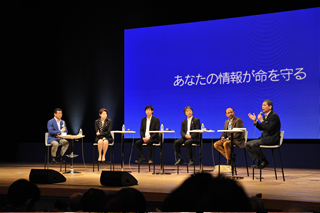
※Image
Seating capacity 1,000 No application necessary
OBJECTIVE
Based on comments and reports from thematic sessions, participants from different stakeholders are expected to share challenges and their ideas on concrete actions to take, which allows participants to explore a common direction towards the year 2030 and to brainstorm about what we can do in order to contribute to the global efforts on disaster risk reduction.
PROGRAM
■Reports from Each Thematic Session
■Discussion
■Summary
【Adviser】
●Mr. Yoshiaki Kawata (Director and Professor, Research Center for Safety Science, Kansai University)
●Ms. Keiko Itabashi (Producer of Disaster Risk Reduction and Prevention, FM Sendai)
【Coordinator】
●Mr. Fumihiko Imamura (Director, International Research Institute of Disaster Science (IRIDeS), Tohoku University)
Exhibition 10:00–18:00 Venues: Sendai International Center Conference Building 2F, 3F
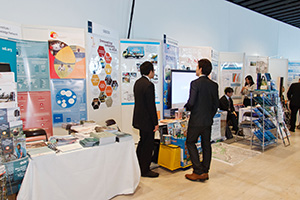
※Image
OBJECTIVE
Booth exhibitions will be held by municipalities, national government related organizations, local groups and organizations, NPOs, research institutions, etc.
Mini Presentations 13:00~13:50 Venues: Sendai International Center Conference Building 2F, 3F
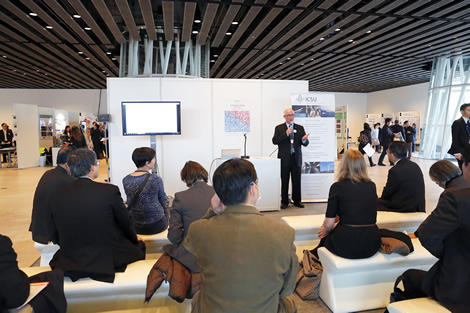
※Image
OBJECTIVE
Mini-talks or presentations will be provided by participating groups and disaster risk reduction and reconstruction related groups.
FLOOR MAP


ACCESS

